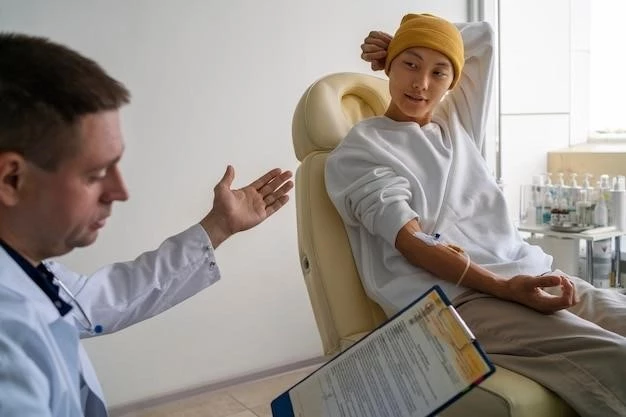Overview of Rothmund–Thomson Syndrome
Rothmund–Thomson Syndrome (RTS) is a rare genetic disorder affecting the skin, eyes, bones, hair, and teeth․ It is characterized by distinctive abnormalities and a predisposition to cancer․
Rothmund-Thomson Syndrome (RTS) is a rare genetic disorder characterized by skin abnormalities, sparse hair, short stature, skeletal and dental issues, and an increased risk of cancer․ The syndrome typically manifests with a facial rash (poikiloderma) and other distinctive features affecting various parts of the body․
Clinical Features of Rothmund–Thomson Syndrome
Rothmund–Thomson Syndrome presents with distinctive skin abnormalities, sparse hair, skeletal issues, and an increased cancer risk․ Early diagnosis is crucial․
Definition and Characteristics
Rothmund–Thomson Syndrome (RTS) is a rare genetic disorder characterized by skin abnormalities, sparse hair, short stature, skeletal issues, and an increased risk of cancer․ It typically presents with a facial rash (poikiloderma) and distinctive features affecting various parts of the body․
Ocular and Musculoskeletal Manifestations
Individuals with Rothmund–Thomson Syndrome may experience ocular issues like juvenile cataracts and musculoskeletal abnormalities including short stature and skeletal defects․ Regular eye exams and orthopedic assessments are essential for comprehensive management․
Skin Abnormalities
Rothmund–Thomson Syndrome is characterized by skin issues such as a facial rash (poikiloderma), sparse hair, and teeth abnormalities․ Early recognition is vital for management․
Rothmund–Thomson Syndrome follows an autosomal recessive pattern of inheritance, meaning that individuals inherit one mutated gene from each parent․ Understanding the genetic basis of the syndrome is crucial for accurate diagnosis and genetic counseling․
Inheritance Pattern
Rothmund–Thomson Syndrome follows an autosomal recessive inheritance pattern, necessitating the inheritance of two mutated genes, one from each parent․ Precise understanding of this genetic inheritance mode is vital for counseling and management․
Diagnosis and Differential Diagnosis
Diagnosing Rothmund-Thomson Syndrome involves recognizing characteristic features like skin rash, sparse hair, and bone abnormalities․ Differential diagnosis may include other genetic skin disorders․
Challenges in Early Diagnosis
Early diagnosis of Rothmund–Thomson Syndrome can be challenging due to its rarity and the variability of symptoms․ Awareness of the characteristic features such as facial rash, sparse hair, skeletal anomalies, and cancer predisposition is crucial for prompt and accurate identification․
Histopathologic Findings
Histopathologic examination in Rothmund–Thomson Syndrome is rarely described but can aid in diagnosis․ Understanding the unique cellular changes associated with the disease can provide valuable insights for clinicians managing affected individuals․
Management and Treatment Approaches
Management of Rothmund-Thomson Syndrome involves addressing skin, hair, skeletal, and dental issues, along with cancer surveillance․ Treatment focuses on symptom relief and regular monitoring to detect complications early․
Symptomatic Care
When managing Rothmund–Thomson Syndrome, focusing on relieving symptoms like skin issues, hair abnormalities, and skeletal problems is essential․ Early intervention and regular check-ups play a key role in ensuring the well-being of individuals affected by the syndrome․
Cancer Surveillance and Prevention
In Rothmund-Thomson Syndrome, regular cancer surveillance is crucial due to the increased risk of developing certain cancers․ Prevention strategies should focus on early detection and monitoring to address potential malignancies promptly․

Prognosis and Life Expectancy
Understanding the prognosis of Rothmund-Thomson Syndrome helps in managing the condition and providing appropriate care to improve the individual’s quality of life․ Regular monitoring and early intervention can positively impact the overall well-being and life expectancy of affected individuals․
Impact on Lifespan
Rothmund–Thomson Syndrome has implications for lifespan due to potential complications like cancer․ Early detection and appropriate management can positively influence the prognosis and overall life expectancy of individuals with the syndrome․
Research and Advances in Rothmund–Thomson Syndrome
Stay informed about the latest research and advancements in Rothmund-Thomson Syndrome to understand the cutting-edge treatments and management strategies available․ Keeping up-to-date with recent studies can help individuals and healthcare providers make informed decisions for better outcomes․
Recent Studies and Findings
Recent research on Rothmund–Thomson Syndrome has focused on understanding the genetic basis, clinical manifestations, and potential targeted therapies․ Advances in molecular genetics have shed light on the pathophysiology of the syndrome, contributing to improved diagnostic methods and novel treatment approaches․ Stay updated on the latest studies to benefit from cutting-edge advancements in the field․
Support Resources for Individuals and Families
Accessing support resources like the Rothmund-Thomson Syndrome Foundation can provide valuable information, guidance, and community connections for individuals and families affected by the syndrome․ Stay connected to enhance your understanding and receive support․
Rothmund–Thomson Syndrome Foundation
Engage with the Rothmund-Thomson Syndrome Foundation for valuable support, resources, and connections within a supportive community․ Access to tailored information and assistance can significantly benefit individuals and families navigating the challenges of the syndrome․
Real-life stories and case studies can provide valuable insights into living with Rothmund–Thomson Syndrome․ Learning from others’ experiences can offer support and perspective for individuals and families facing similar challenges․

Case Studies and Real-Life Experiences
Reading personal stories and testimonials can offer insight and support to individuals and families navigating Rothmund-Thomson Syndrome․ Hearing from others who have experienced the condition firsthand can provide valuable perspectives and guidance for managing the challenges associated with the syndrome․
Future Directions in Understanding and Managing Rothmund–Thomson Syndrome
Stay informed about emerging research and advancements in understanding and treating Rothmund-Thomson Syndrome to enhance diagnosis, care, and outcomes․ Keeping up-to-date with developments in the field can lead to improved management strategies and quality of life for individuals affected by the syndrome․
